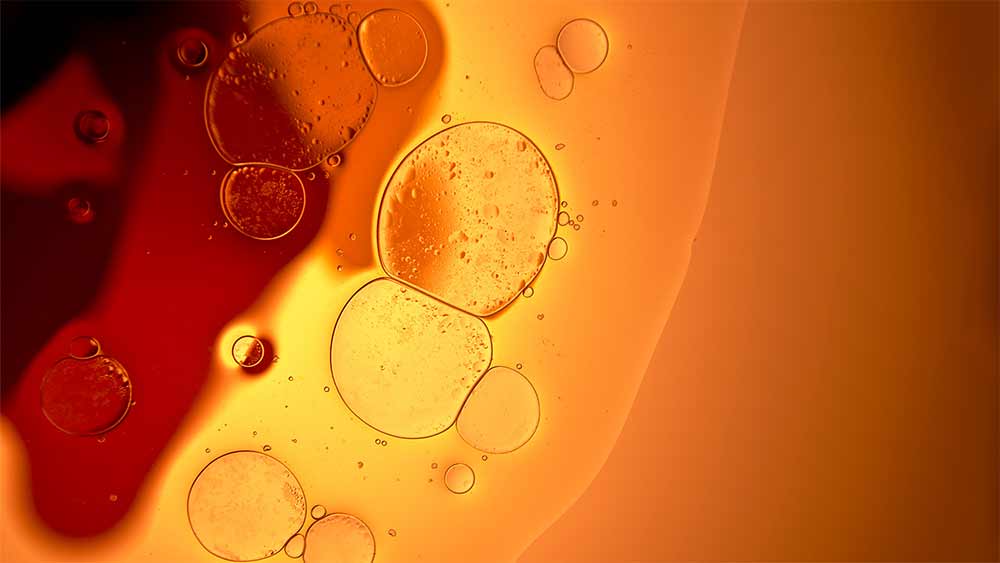
An interface where nanoparticles can change charges is made possible by using several sheets of graphene quantum dots stacked together to convert between positive and negative charges. |
Image: Getty Images
Researchers at Texas A&M University have found a way to control the charge of nanoparticles on a two-fluid interface to create a more stable system in which its charge can also be switched and controlled. The ability to change the charge of nanoparticles on a two-fluid interface — specifically, an oil-water interface — would result in a surface that could acclimate itself to fit many diverse applications, such as a more durable firefighting operation and even controlled release in certain medications.
“Based on this idea, we proposed a concept that this will be a pH-responsive material. If we change the pH value, we can control the molecular diffusion,” said Dr. Qingsheng Wang, associate professor in the Artie McFerrin Department of Chemical Engineering and holder of the George Armistead ‘23 Faculty Fellowship at Texas A&M.
The team’s research was published in the American Chemical Society’s journal, ACS Applied Materials & Interfaces.
Emulsion is a mixture of two or more incompatible and unmixable liquids, much like oil and water, that can be stabilized by the interference of solid particles. These solid particles tightly assemble at the fluid-fluid interface, like swim lanes in a lap pool, to prevent coalescence. This process is known as Pickering emulsion.
The success of this system is ultimately made possible by the use of graphene quantum dots (GQDs) containing zwitterionic properties. Using several sheets of GQDs stacked together, the research team is able to not only stabilize emulsion, but also control the molecular diffusion on the interface by adjusting its pH values, much like flipping a light switch. These sheets together measure less than 5 nanometers in thickness. To put this into perspective, the average human hair is anywhere from 80,000 to 100,000 nanometers wide.
The functionalized GQDs are composed of nanocarbon materials containing zwitterionic structure, which is formed from nanoparticles that contain an equal amount of both positive and negative charges while still remaining electronically neutral. After the nanoparticles are added to the interface, they separate the two fluids by making one side hydrophobic and the other side hydrophilic.
This electronic makeup also makes it possible to control the overall pH of the interface. By adjusting the pH values, these GQDs can be finely tuned to both block and unblock an oil-water interface. Changing the nanoplatelets on the interface to the same charge means that they will be disassembled, thus creating a more stable emulsion system.
“This is going to help us design a good system in high-performance fire suppression. In addition, because we can control the release, this could be promising for drug delivery and enhanced oil recovery,” Wang said. “Usually, this is very difficult to do. And sometimes, if we can control the release, but the system itself is not stable, it may only be possible to do one or two cycles of this before the system collapses.”
The research team consists of chemical engineering doctoral student Rong Ma and former chemical engineering doctoral students Dr. Minxiang Zeng, now a research scientist at the University of Notre Dame, and Dr. Dali Huang, now a process engineer at Formosa Plastics Corporation.
“Based on this idea, we proposed a concept that this will be a pH-responsive material. If we change the pH value, we can control the molecular diffusion,” said Dr. Qingsheng Wang, associate professor in the Artie McFerrin Department of Chemical Engineering and holder of the George Armistead ‘23 Faculty Fellowship at Texas A&M.
The team’s research was published in the American Chemical Society’s journal, ACS Applied Materials & Interfaces.
Emulsion is a mixture of two or more incompatible and unmixable liquids, much like oil and water, that can be stabilized by the interference of solid particles. These solid particles tightly assemble at the fluid-fluid interface, like swim lanes in a lap pool, to prevent coalescence. This process is known as Pickering emulsion.
The success of this system is ultimately made possible by the use of graphene quantum dots (GQDs) containing zwitterionic properties. Using several sheets of GQDs stacked together, the research team is able to not only stabilize emulsion, but also control the molecular diffusion on the interface by adjusting its pH values, much like flipping a light switch. These sheets together measure less than 5 nanometers in thickness. To put this into perspective, the average human hair is anywhere from 80,000 to 100,000 nanometers wide.
The functionalized GQDs are composed of nanocarbon materials containing zwitterionic structure, which is formed from nanoparticles that contain an equal amount of both positive and negative charges while still remaining electronically neutral. After the nanoparticles are added to the interface, they separate the two fluids by making one side hydrophobic and the other side hydrophilic.
This electronic makeup also makes it possible to control the overall pH of the interface. By adjusting the pH values, these GQDs can be finely tuned to both block and unblock an oil-water interface. Changing the nanoplatelets on the interface to the same charge means that they will be disassembled, thus creating a more stable emulsion system.
“This is going to help us design a good system in high-performance fire suppression. In addition, because we can control the release, this could be promising for drug delivery and enhanced oil recovery,” Wang said. “Usually, this is very difficult to do. And sometimes, if we can control the release, but the system itself is not stable, it may only be possible to do one or two cycles of this before the system collapses.”
The research team consists of chemical engineering doctoral student Rong Ma and former chemical engineering doctoral students Dr. Minxiang Zeng, now a research scientist at the University of Notre Dame, and Dr. Dali Huang, now a process engineer at Formosa Plastics Corporation.